By Sarah Biggart (Convatec me+™)
Frequently I speak to callers about the challenges of caring for an ostomate with memory loss. Often time, people who were previously self-sufficient, independent ostomates become pre-occupied with their pouch; sometimes even pulling on it, which could cause numerous issues1,2.
This could be in the future for some of us, and a reality some caregivers are facing now as they care for and support loved ones.
If you are assisting a loved one, and you see them tugging, pulling, scratching or playing with their appliance, the first thing you should consider is that there may be a reason for this behavior. Their peristomal skin may be itching or burning, or they might be experiencing pain or discomfort around the stoma3. For someone who may have trouble communicating, this could be their way of letting you know something is wrong.
If this is a new behavior, contact your local ostomy nurse or healthcare provider. It’s important to rule out any medical issues they may be experiencing.
If the issue is determined to be purely behavioral, we have some suggested tips and tricks that may help as you care for and support your loved one.
Pouch Change Tips1,2,3:
- Create a safe, relaxed environment. Take your cues from your loved one considering where they are the most comfortable. Maybe instead of standing in the bathroom, try laying down on the bed with soothing music or a favorite show playing in the background.
- If evenings can be tough, a morning pouch change before eating breakfast may make more sense for you.
- Keep ostomy supplies organized and clearly labeled for people who may be able to handle pouch changes independently or for rotating caregivers.
- Use a calendar or the My Ostomy Journey App to track pouch changes. Do not wait until there is a leak to change the pouch. A leaking pouch may contribute to skin breakdown issues.
- It may be necessary to store pastes, powders and sprays securely, as patients may attempt to tamper with or ingest these items.
- Try ostomy accessories designed to simplify pouch changes.
Daily Living Tips1,2,3:
- Many people with memory loss find comfort in routine. Find a rhythm to ostomy related tasks, such as emptying the pouch, and use the same verbiage each time to bring familiarity. Coordinate with the entire care team to ensure everyone is aligned with using similar language and prompts.
- Staying occupied may help with keeping hands away from the pouching system. Things like puzzles, sorting items and folding something, may be just the thing to help.
- Try an Ostomy wrap. Employing the “Out of Sight, Out of Mind” principal, a wrap helps to keep the pouch concealed and supported. A good ostomy wrap is made from a soft and stretchy wicking fabric and helps to keep sweat and moisture away from the skin and the wearer cool and comfortable.
Feeling isolated while providing care for loved ones is a common challenge, we encourage utilizing groups for ostomy support.
And remember that caregivers need care too. You may find comfort in your local Ostomy Support group Find one near you on the UOAA support group finder: https://www.ostomy.org/support-group-finder/.
Ruth and her family were confused and stressed when they had to take on the care of their 99-year- old mother’s ostomy.
“My mother has had a colostomy for nearly 60 years. She is now 99 years old with dementia, but had been independently keeping up with her stoma and pouch until just a few years ago. When family members started taking on the task of assisting her, we had to scramble to get up-to-speed since we never paid attention to the details of changing her “appliance” or emptying and re-closing the pouch.”
Ruth connected with me+™ to learn more about how to use ostomy products and accessories, and received follow up product samples and ongoing support.
“Erica was compassionate, truly listened to the problems we were encountering with my mother’s situation, and suggested products that addressed each of those challenges. The bottom line is Erica made me feel supported in my mother’s care, and that she cared that our family wanted my mother’s quality of life upheld when other healthcare providers wrote her off due to her age and mental condition. Erica contributed to us honoring my mother’s wonderfully rich and productive life at a time when that’s not evident to a stranger’s eye. We are so grateful for the support we’ve received through Convatec’s me+ Clinical Support Nurse Team.”
If you have questions about product sampling or nurse support available through the me+™ program, please contact us at 1-800-422-2211 or cic@convatec.com. We look forward to helping you soon.
Editor’s note: This blog is from one of our digital sponsors, Convatec. Sponsor support along with donations from readers like you help to maintain our website and the free trusted resources of UOAA, a 501(c)(3) nonprofit organization.
References:
- DementiaUK, Caring for a person with a Stoma and Dementia. https://www.dementiauk.org/information-and-support/health-advice/caring-for-a-person-with-a-stoma-and-dementia/. Accessed November 13th, 2023.
- United Ostomy Associations of America, Inc, Dementia Stoma Care. https://www.ostomy.org/dementia-stoma-care/. Accessed November 13th, 2023.
- McGrogan M. How holistic assessment and appropriate product selection will enhance quality of life for ostomates with cognitive impairment. WCET® Journal 2021;41(1):33-35

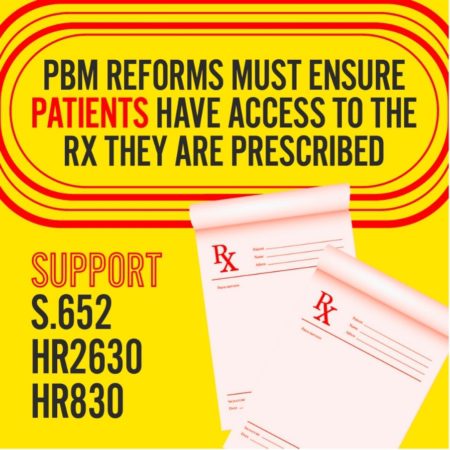 (DDNC) and the Safe Step Act Coalition where we share common goals and work together to achieve them. For example, the DDNC’s mission is to work cooperatively to improve access to and the quality of digestive disease health care in order to promote the best possible medical outcome and quality of life for current and future patients. Although UOAA is unable to have its own “ostomy” lobby days or fly-ins on the Hill (due to financial limitations), we are an important part of the annual DDNC Spring Public Policy forum. Ostomy advocates join forces with other digestive disease advocates to meet with Congressional staffers to share their stories and ask for support of our federal legislative priorities. These coalitions submit joint letters of requests or support/opposition to Congressional leaders and key regulatory decision-makers. An example of power and strength in numbers is the Safe Step Act Coalition which now comprises 215 patient organizations all advocating for passage of this important piece of legislation!
(DDNC) and the Safe Step Act Coalition where we share common goals and work together to achieve them. For example, the DDNC’s mission is to work cooperatively to improve access to and the quality of digestive disease health care in order to promote the best possible medical outcome and quality of life for current and future patients. Although UOAA is unable to have its own “ostomy” lobby days or fly-ins on the Hill (due to financial limitations), we are an important part of the annual DDNC Spring Public Policy forum. Ostomy advocates join forces with other digestive disease advocates to meet with Congressional staffers to share their stories and ask for support of our federal legislative priorities. These coalitions submit joint letters of requests or support/opposition to Congressional leaders and key regulatory decision-makers. An example of power and strength in numbers is the Safe Step Act Coalition which now comprises 215 patient organizations all advocating for passage of this important piece of legislation!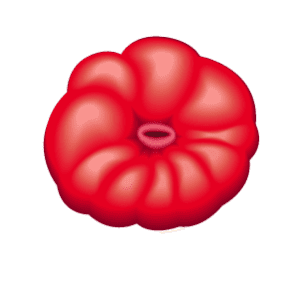
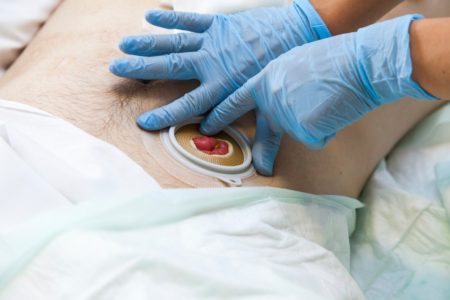
 enjoying a highly active lifestyle. So when I found out that I needed a stoma revision, I knew that my recovery would look very different from my previous surgeries. I knew that in order to improve my recovery time, decrease my risk for complications, and get back to the mountains, I had to put in more work.
enjoying a highly active lifestyle. So when I found out that I needed a stoma revision, I knew that my recovery would look very different from my previous surgeries. I knew that in order to improve my recovery time, decrease my risk for complications, and get back to the mountains, I had to put in more work. As you start your journey to recovery, you’ll experience that life after ostomy surgery is a new reality. No matter how far after surgery you are, you will need to adapt to your condition and cope with your new situation. If you’re looking for additional support during your ostomy journey, consider enrolling in Coloplast’s free online support program, Coloplast® Care! It is a personal product support program designed in collaboration with nurses to provide you with individualized product support and lifestyle education, and product access coordination. Coloplast Care is available when you need it – whether it is through our online educational resources offering reliable product and lifestyle advice, news and tips customized for your situation, or over the phone with our team of dedicated Ostomy Advisors. We’re here to help!
As you start your journey to recovery, you’ll experience that life after ostomy surgery is a new reality. No matter how far after surgery you are, you will need to adapt to your condition and cope with your new situation. If you’re looking for additional support during your ostomy journey, consider enrolling in Coloplast’s free online support program, Coloplast® Care! It is a personal product support program designed in collaboration with nurses to provide you with individualized product support and lifestyle education, and product access coordination. Coloplast Care is available when you need it – whether it is through our online educational resources offering reliable product and lifestyle advice, news and tips customized for your situation, or over the phone with our team of dedicated Ostomy Advisors. We’re here to help!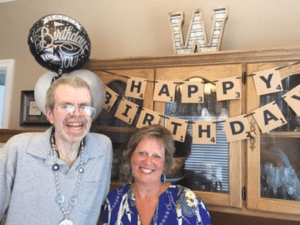
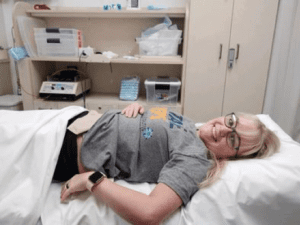 I’m thankful for all of the WOCNs I have been to. Some I’ve known for many years. They are very knowledgeable and helpful with various products.I also want to give a shoutout to our great WOCNs at 11 Health & Technologies for being amazing for our team and patients. ? –Megan Alloway
I’m thankful for all of the WOCNs I have been to. Some I’ve known for many years. They are very knowledgeable and helpful with various products.I also want to give a shoutout to our great WOCNs at 11 Health & Technologies for being amazing for our team and patients. ? –Megan Alloway being admitted within the first 90 days post operatively [1]. This is one of the highest rates of readmission when compared to other types of surgery. The most common cause for re-admission is dehydration, at approximately 40% of post ileostomy readmissions [2]. We also know that 84% of ostomy patients develop skin issues. The causes of these can be chemical, mechanical, or microbial, and possibly avoidable. Ostomates also have significantly increased healthcare costs, especially when affected by peristomal skin complications, and leakage [2]. It is known that 25% of ostomates develop renal failure within two years. The complications these patients encounter require 7x more outpatient visits than the average patient. And 29.1% of ostomates experience readmission which costs approximately $16,000 per patient [1]. These statistics show that specialized care for these patients is imperative to improving patient outcomes in this patient population.
being admitted within the first 90 days post operatively [1]. This is one of the highest rates of readmission when compared to other types of surgery. The most common cause for re-admission is dehydration, at approximately 40% of post ileostomy readmissions [2]. We also know that 84% of ostomy patients develop skin issues. The causes of these can be chemical, mechanical, or microbial, and possibly avoidable. Ostomates also have significantly increased healthcare costs, especially when affected by peristomal skin complications, and leakage [2]. It is known that 25% of ostomates develop renal failure within two years. The complications these patients encounter require 7x more outpatient visits than the average patient. And 29.1% of ostomates experience readmission which costs approximately $16,000 per patient [1]. These statistics show that specialized care for these patients is imperative to improving patient outcomes in this patient population.

